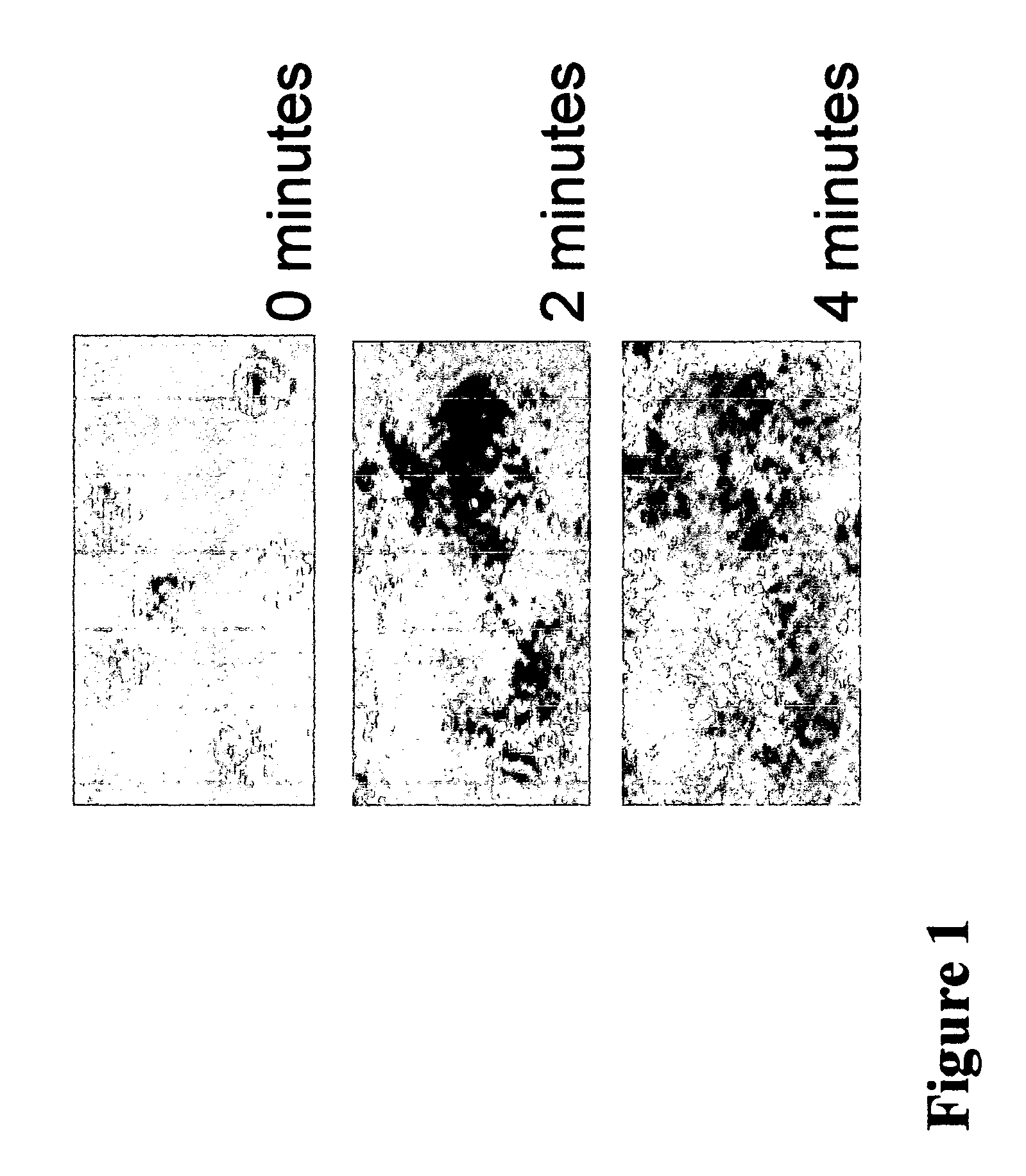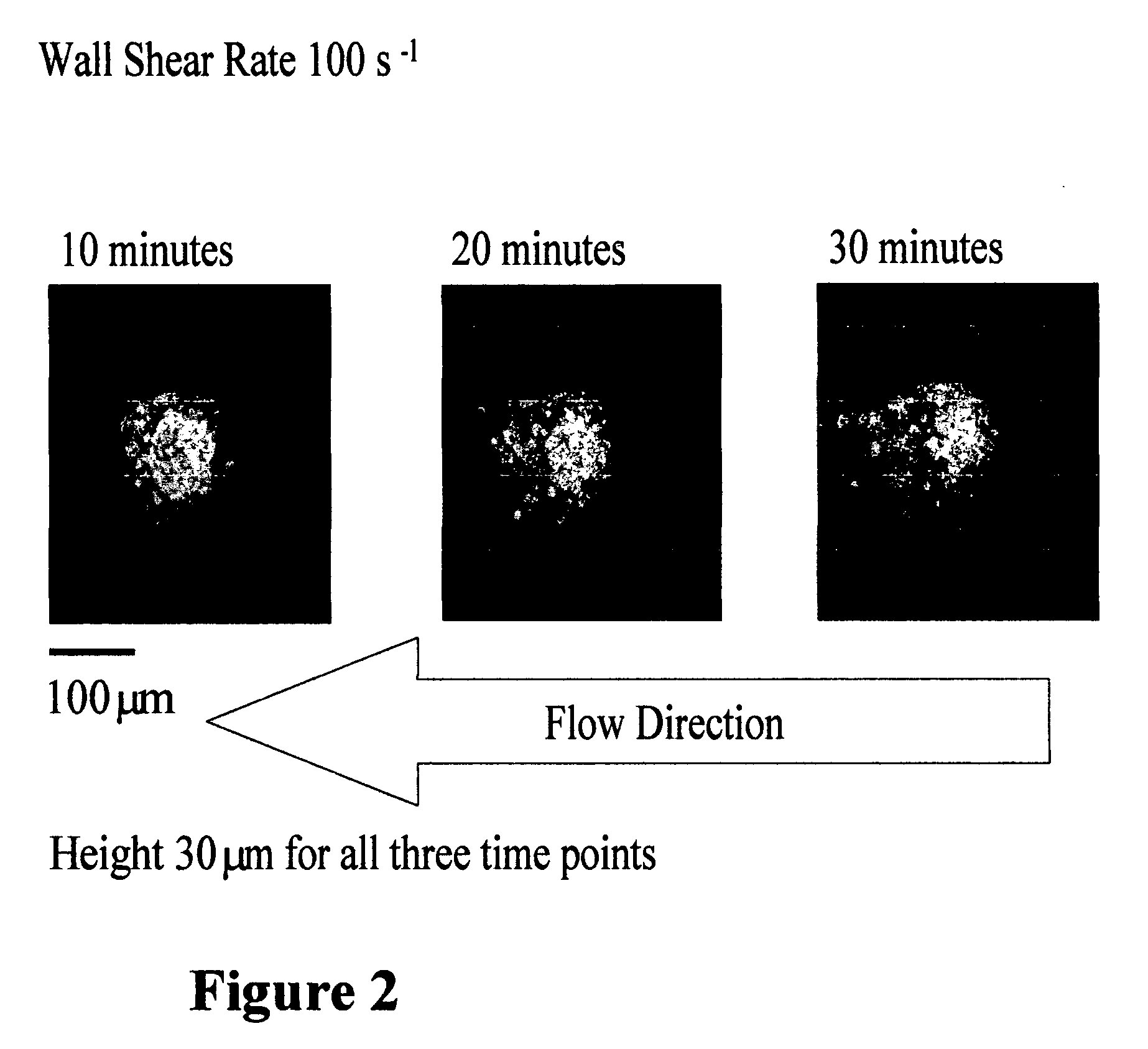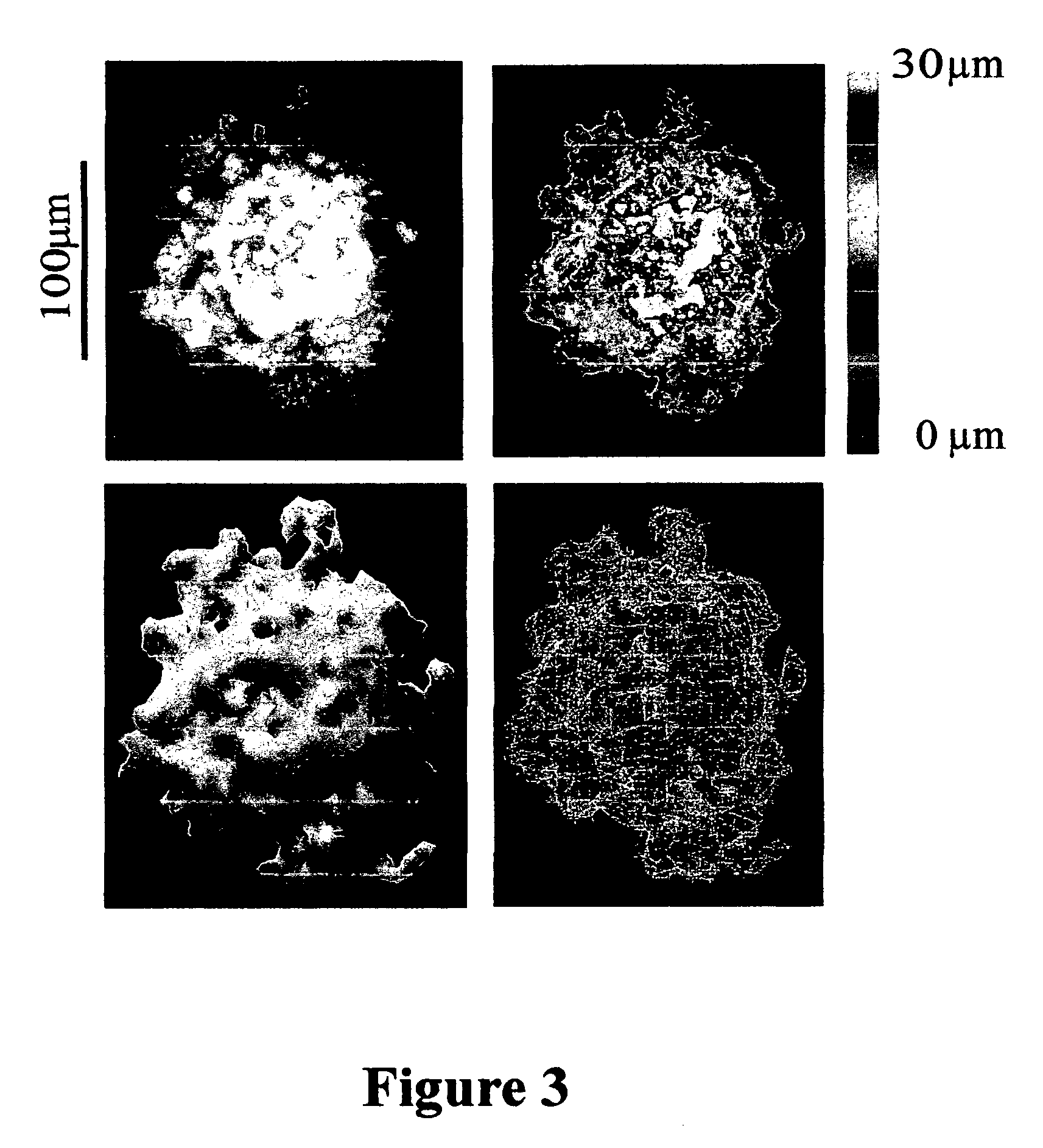Apparatus and method to measure platelet contractility
- Summary
- Abstract
- Description
- Claims
- Application Information
AI Technical Summary
Benefits of technology
Problems solved by technology
Method used
Image
Examples
example 1
Perfusion Studies.
Methods
Blood obtained from healthy volunteers was mixed with D-phenyl alanyl-L-prolyl-L-argine chloromethyl ketone dihydrocloride (PPACK, 93:M) to prevent clotting. The platelet count was adjusted to 10,000 / μl to reduce the number of events on the surface and facilitate image analysis. Perfusion experiments were conducted in a parallel plate flow chamber at 37° C. (3) using type I collagen fibrils as reactive substrate onto glass coverslips. The interaction of flowing platelets with the surface was evaluated in real time by reflection interference contrast microscopy (RICM) using a Zeiss Axiovert 135M microscope. In this technique, interference colors indicate the distance between two surfaces, such as cellular membranes and a substrate coated on glass. On a gray scale, zero-order black indicates a separation of 4-12 nm, and white a distance >20-30 nm (15;19). Experiments were recorded on S-VHS videotape at the rate of 30 frames per second and analyzed off-lin...
example 2
In order to demonstrate some of the technical capabilities currently being developed in the Inventors' laboratory, a summary of the development of a technique to create an upscale replica of an actual thrombus is presented below. The geometrical data of the thrombus are obtained with confocal microscopy while the blood is continuously flowing as previously reported (20). This technique was developed to study the flow field around a thrombus in an upscale chamber. By matching the Reynolds number, it is possible to determine the flow path in the microscopic realm, based on the similarity principle.
The evolution of an isolated thrombus at 100s−1 is depicted in FIG. 2. For the experiment shown here, a single thrombus was recorded from initiation of the flow. This image shows the growth changes in the thrombus once it is developed (>10 minutes) to 30 minutes. Each image is derived from the summation of a series of confocal image slices. Of note is the peculiar growth pattern of the th...
example 3
Below, Inventors describe their technical solution to create an upscale three-dimensional (3-D) model of a thrombus based on the information obtained with confocal microscopy.
As a first step, Inventors decided to investigate the already available techniques for 3-D rapid prototyping. A commonly used technique is stereolithography, which uses step-wise planar buildup of the object, based on the solidification of a photoresin by a laser beam. After each layer is cured, the object is lowered into a fluid resin pool by a distance equal to the vertical resolution of the system. This technique appears to be adequate in view of the complex geometries that it can handle.
The main practical difficulty in merging confocal microscopy and stereolithography is the lack of compatibility of the data. Confocal microscopy renders the data in a series of images (TIFF files in our system). These images are represented by a series of pixels with a given grayscale value, and the images are separated...
PUM
 Login to View More
Login to View More Abstract
Description
Claims
Application Information
 Login to View More
Login to View More - R&D
- Intellectual Property
- Life Sciences
- Materials
- Tech Scout
- Unparalleled Data Quality
- Higher Quality Content
- 60% Fewer Hallucinations
Browse by: Latest US Patents, China's latest patents, Technical Efficacy Thesaurus, Application Domain, Technology Topic, Popular Technical Reports.
© 2025 PatSnap. All rights reserved.Legal|Privacy policy|Modern Slavery Act Transparency Statement|Sitemap|About US| Contact US: help@patsnap.com



